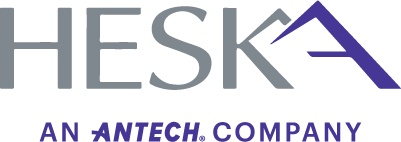How EOTRH Screening Boosts Bottom Lines
By Jon M. Gieche, DVM, FAVD EQ, DAVDC EQ
Equine practitioners are faced with limited options for the economic growth of their practice. Increasing service to the clients you already have is one of the best ways to boost revenue; one way, specifically, is through dental screening and care.
Did you know up to 60 percent of horses 13 years of age or older suffer from severe periodontal disease?1 Horses are often suffering from dental disease longer than we think because the condition wasn’t obvious during patient assessment. Most owners are aware of the pain and suffering dental disease can cause from their own experiences, which is why when owners are properly educated on the painful clinical situations, there is limited pushback for regular screening.
This article looks at screening for equine odontoclastic tooth resorption and hypercementosis (EOTRH), a recently recognized equine disease in the United States and Europe, and how it can help increase revenue streams for equine veterinarians.
What is EOTRH
EOTRH is found in a high percentage of older horses and presents with many vague clinical signs that can mimic other issues, especially in early onset cases. It mainly the incisors and is characterized by internal and external resorption of the tooth structures and a proliferative cementum on the tooth’s exterior. In the severe form, there is obvious gingivitis; fractured, misaligned, or missing teeth; swelling of the gums; and an expansive sub- or supragingival cementosis. The animal’s pain is the most important clinical feature, but one that is not necessarily observable.
Horses in the early stages of this disease show very few outward signs. Owners may not perceive there is an issue until the condition is well advanced and/or there is a behavioral change. Because horses are prey species, they hide their pain well. Horses with painful dental disease often continue to eat while in pain, misleading the owner. Subtle changes, such as losing interest in treats like carrots and apples, may be a big clue. Even if the owner requests a visit from the veterinarian and states, “He no longer likes to eat carrots from my hand,” a visual oral exam may not show obvious signs of pathology.
Without early detection and proper treatment, the horse remains in unnecessary undiagnosed pain as the condition progresses. Currently, in advanced cases, extraction of EOTRH teeth is the only treatment option effective in eliminating pain for the patient.
Due to the subtle clinical presentation of early EOTRH, practitioners should recommend regular screening of horses older than 13. Screening for this single disease alone could easily leverage the dental services in your practice and pay for new dental radiographic equipment or dental surgical tools. Intraoral direct radiology (DR) screening is quick and easy, good for patient care and the bottom line, and it sets the general practitioner apart from nonprofessional service providers.
The benefits of a complete dental exam
EOTRH also can indicate other underlying subtle conditions. A recent study2 showed a set of risk factors that might be associated with this disease: trauma from excessive dental floating, especially from nonprofessional services; Cushing’s; metabolic syndrome; or even laminitis. The presence of EOTRH might indicate the need for further investigative work for these and other underlying conditions.
Intraoral radiology can quickly reveal the condition and greatly help with a treatment plan, which may require anesthesia and surgery. The earlier this condition is recognized, the better the chance of protecting the unaffected teeth for years to come and the less pain the horse will have to endure.
Consider the economics of adding this to your practice with the following example:
- Horse owner calls veterinarian for a routine annual floating
- Veterinarian arrives, performs an oral exam, and uses a video oroscope to document the entire arcade
- Veterinarian locates and shows the horse’s owner a cracked tooth or a pulp exposure
- Veterinarian recommends a dental radiographic series
- The X-rays show pulp disease; veterinarian recommends surgical removal of the tooth
- Veterinarian takes postoperative radiographs of the affected area and may also use video oroscope to review the procedure results
- Postsurgery treatment with antibiotics and NSAIDs
- Follow-up exam +/- radiographs
Even if the study provides no evidence of additional pathology, this workflow could generate hundreds of dollars in revenue. Excellent patient care via regular screening resulting in early detection of subclinical disease can provide a healthy boost to the equine practitioner’s bottom line. If radiographs reveal evidence of EOTRH, the ensuing expanded diagnostics (bloodwork), as well as medical and possible surgical treatments, could generate additional revenue. This level of care also highlights the dramatic additional capability and training the veterinarian has compared to nonveterinary lay services.
Why GPs aren’t doing intraoral radiology
Many veterinarians are reluctant to take intraoral incisor images due to concerns of the time required to prep the patient and acquire the images, as well as the safety of the equipment and the patient.
Perceived roadblocks to intraoral radiology include risk of damage to the detector, difficulty in placement of a larger size detector in the horse’s mouth, difficulty in gaining the full set of images needed, and difficulty in getting and interpreting images.
Veterinarians can capture the necessary images with great success if they are trained properly, have the necessary equipment, and take the appropriate precautions to protect that equipment.
New dental-specific equine DR systems with incredibly small sensors are emerging and making intraoral imaging of incisors and canines easy, quick, and safe.
Dental-specific detectors can use the same X-ray generator used for lameness exams and can easily provide a complete view of all upper or lower incisors, as well as the canine teeth. With minimal training, any veterinarian can easily acquire the needed views and almost instantly review the images with the owner. Although many equine dental specialty practitioners recommend full oral X-ray studies (including upper and lower cheek teeth), a very simple two-view series of the incisors/canines can be done quickly with mild sedation. This screening technique can provide significant insight to the health of the horse’s mouth, doesn’t require a specialist, and offers general practitioners the option to refer based upon findings if necessary, providing yet another quality service to clients.
The bottom line
Educate your clients about this silent and painful disease. Make intraoral imaging for EOTRH screening easy for you, your clients, and their horses by investing in equipment that will give you true intraoral DR diagnostic capability. Evaluate, diagnose, and treat more dental disease while increasing the bottom line of your practice.
This article was originally published by Veterinary Practice News on November 19, 2018.
References
1 Dixon PM, Tremaine WH, Pickles K, et al. Equine dental disease Part 4: a long-term study of 400 cases: apical infections of cheek teeth. Equine Vet. J. 2000;32(3):182-194.
2 https://aaep.org/node/23890

